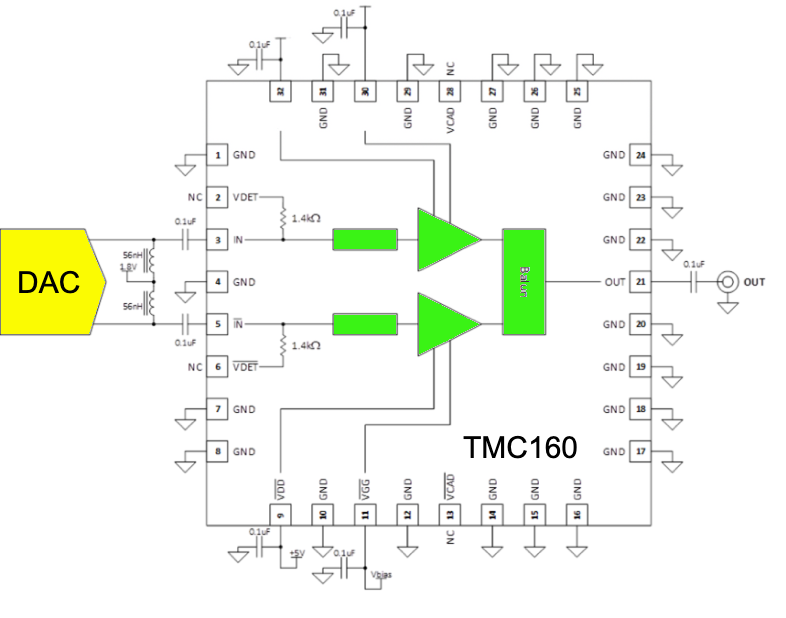
—Broadband TMC160 supports >10 giga-samples-per-second (GSPS) DACs
— 7 mm x 7mm QFN package integrates anti-aliasing filter; quasi-differential low noise, high IIP3 amplifiers; and balun for single-ended output
—Low noise amplifier (LNA) die available as a separate product
mmTron, Inc. announces the release of the TMC160 digital-to-analog converter (DAC) interface IC. The IC amplifies and converts the differential output of a high-speed DAC to a clean, low noise, single-ended signal to drive the RF chain of a transmitter.
“High-speed DACs now have sample rates above 10 GSPS and require low noise, highly linear microwave interfaces to filter and convert their differential outputs to feed the single-ended RF transmit chain,” said Seyed Tabatabaei, mmTron’s CEO and founder. "mmTron’s TMC160 DAC interface IC was designed for this purpose."
With 16 GHz bandwidth, the TMC160 integrates anti-alias lowpass filtering, low noise amplification, and a balun that converts the differential DAC output to a single-ended 50 Ω output compatible with traditional RF signal chains. The differential architecture provides high common-mode rejection.

TMC160 block diagram
The TMC160 has 10–16 dB nominal gain to 16 GHz, a noise figure (NF) under 5 dB, and 30 dBm output third-order intercept (IP3). The built-in anti-alias filter rejects the clock and intermodulation signals from the DAC. The TMC160 quasi-differential LNA is biased with 5 V and nominally draws 250 mA. To bias the gates of the low noise amplifiers, a low current negative supply is also required. As the input and output are DC coupled, the design includes an internal bias T to eliminate the need for an external inductor, simplifying the bias interface at the balun.
The multichip module is packaged in a 7 mm x 7 mm air-cavity QFN.
Characterization data and samples of the TMC160 are available for customer evaluation. To receive more information about the performance of the TMC160, including the data sheet, email mmTron at contact@mmtron.com.
The clock frequency and characteristics of the anti-alias filter can be customized, and future packaging options include ceramic air-cavity and plastic overmolded QFNs. The broadband LNA will also be available as a separate die product.
